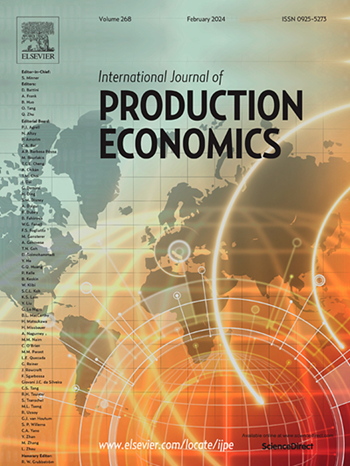We belong together - A system-level investigation regarding AGV-assisted order picking performance
IF 9.8
1区 工程技术
Q1 ENGINEERING, INDUSTRIAL
引用次数: 0
Abstract
Automation technologies are currently being introduced in many warehouse intralogistics operations to support human workers in manual order picking. Robotic systems supporting manual order picking are therefore receiving increasing attention in the production economics literature. One related concept is human–robot collaboration, in which automated guided vehicles (AGV) and human pickers collaborate in the same work space. As these automation technologies still represent a minority in a larger manual order picking setting, we propose a role-model opportunity for analyzing the system level of joint operations from an economic perspective. We empirically investigate a pilot test of a new industrial truck deployed as an AGV that automatically follows order pickers in their travel direction within one specific warehouse of a brick-and-mortar grocery retailer. Our data set comprises 140,991 pick location visits performed in one dedicated warehouse aisle between 01 February 2023 and 30 June 2023, with an average of 31.89% of picks involving human–robot and 68.11% human–manual order pickers, with both groups sharing the identical aisle work space. We find that an increasing share of AGVs in the system has a U-shaped impact on order picking time. Therefore, the intuitive assumption of “the more, the better” for introducing AGVs and their impact on order picking performance is not confirmed for the context under investigation. Our findings can guide researchers and managers on how to analyze and economically design system-level order picking in scenarios in which the complete transition to automation remains a distant reality or requires long-term transition windows, a real-life operations management challenge for most order picking contexts.
求助全文
约1分钟内获得全文
求助全文
来源期刊
CiteScore
21.40
自引率
7.50%
发文量
266
审稿时长
52 days
期刊介绍:
The International Journal of Production Economics focuses on the interface between engineering and management. It covers all aspects of manufacturing and process industries, as well as production in general. The journal is interdisciplinary, considering activities throughout the product life cycle and material flow cycle. It aims to disseminate knowledge for improving industrial practice and strengthening the theoretical base for decision making. The journal serves as a forum for exchanging ideas and presenting new developments in theory and application, combining academic standards with practical value for industrial applications.

 求助内容:
求助内容: 应助结果提醒方式:
应助结果提醒方式:


